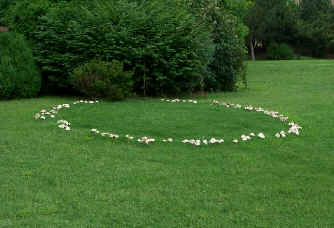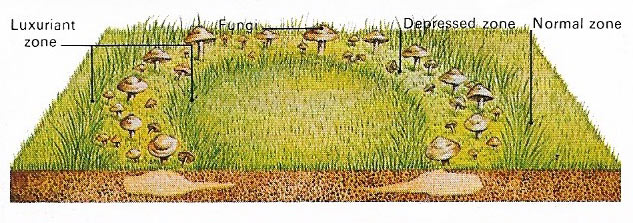fairy ring

Figure 1. Fairy ring in a field.

Figure 2. Fairy rings are produced by a mycelium that grows out equally from a central point. Fungal threads advance and break down the proteins in dead vegetation. As a result, food substances are returned to the soil and an outer ring of lush, green grass springs up. Within this is a ring of poor grass that is thought to be caused either by the mycelium's clogging of the air spaces in the soil – thus preventing water from reaching the grass roots – or else by the fungus's parasitic action on the roots. The third and innermost ring is another lush region that is probably produced by the release of new food materials on the death and decomposition in the soil of the old fungal mycelium.
A fairy ring is complete circle or arc of fruiting bodies of fungi, particularly agarics, which commonly appear in fields and lawns. Each colony of fungi is derived from a single spore from which the hyphae grow out in all directions forming an invisible circular colony that only becomes visible when fruiting bodies are formed at its periphery. The name is derived from the old superstition that mushrooms growing in a circle represent the path of dancing fairies.


